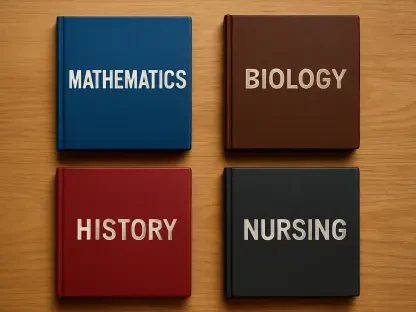Teacher burnout has reached alarming levels, with the National Education Association reporting that 55 percent of teachers are considering leaving the profession earlier than planned, a notable increase from pre-pandemic figures. Educators face mounting demands, including delivering high-quality lessons, addressing individual student needs, and managing extensive administrative tasks. This strain often leads to exhaustion and undermines their ability to continue in their profession, prompting many to seek alternative career paths outside of teaching.
AI promises to address several of these challenges. Educational publishers and edtech companies have long provided tools to aid in administrative tasks, yet these tools have had limited success in adapting to the intricate and dynamic needs of classrooms. AI, however, brings new opportunities to automate administrative work, personalize student support, and enhance classroom management, thereby potentially easing the burden on teachers and improving the overall educational experience for both teachers and students.
Automating Administrative Tasks
Reducing Time on Mundane Chores
One of the primary causes of teacher burnout is the plethora of administrative duties that consume significant time and effort. AI offers the potential to handle repetitive tasks such as taking attendance, grading, entering data, and crafting detailed lesson plans. By automating these responsibilities, AI can free teachers from mundane chores, allowing them to devote more time to actual teaching. This shift from administrative to instructional activities can reinvigorate teachers’ passion for their profession, as they can focus on fostering student growth and engagement.
Furthermore, AI can offer assistance in handling clerical tasks that often accumulate over time. Tasks like copying materials, organizing records, and filling out forms can be managed by intelligent systems, significantly reducing the workload on educators. This not only improves efficiency but also ensures that teachers are not overwhelmed by volumes of paperwork, which typically detract from valuable teaching time. By delegating these tasks to AI, teachers can maintain a healthier work-life balance, decreasing the likelihood of burnout.
Streamlining Lesson Planning
AI can assist in creating detailed lesson plans by analyzing curriculum standards and student data to suggest tailored activities and resources. This not only saves time but also ensures that lesson plans are aligned with educational goals and student needs. Teachers can then focus on delivering engaging and effective lessons rather than spending hours on preparation. AI-driven lesson planning tools can provide creative and innovative strategies that cater to various learning styles, enhancing the overall learning experience.
Moreover, AI can adapt lesson plans in real time based on student progress and feedback. By continuously monitoring classroom dynamics and individual student performance, AI systems can make necessary adjustments to instructional plans, ensuring that all students are adequately challenged and supported in their learning journey. This dynamic and responsive approach to lesson planning can lead to more effective and inclusive teaching practices, addressing the diverse needs of modern classrooms.
Efficient Data Management
Managing and entering data is a time-consuming task that often detracts from instructional time. AI can streamline this process by automatically updating records and generating reports. This reduces the administrative burden on teachers and allows them to concentrate on their primary role of educating students. Additionally, AI can help maintain accuracy in data management, minimizing errors that can arise from manual entry and ensuring that records are up-to-date and reliable.
AI can also facilitate data-driven decision-making by providing teachers with actionable insights gleaned from the vast amounts of data collected. By analyzing trends and patterns in student performance, behavior, and engagement, AI can offer recommendations for targeted interventions and instructional strategies. This empowers teachers to make informed decisions that enhance student outcomes and overall classroom effectiveness, further alleviating the pressure and stress associated with data management.
Personalizing Student Support
Tailoring Education to Individual Needs
The dream of providing personalized education to every student is often unfeasible due to the constraints of a busy classroom. AI can help achieve this aspiration by using data to monitor each student’s progress and needs, subsequently adjusting the curriculum to suit individual requirements. This enables teachers to concentrate their efforts where they are most needed, fostering an environment in which every student has the opportunity to thrive. Personalized education ensures that students receive the right level of challenge and support, leading to better learning outcomes.
AI can also identify learning gaps and provide targeted interventions to address them. By analyzing student performance data, AI systems can pinpoint specific areas where a student may be struggling and recommend resources or strategies to help them catch up. This targeted approach ensures that no student is left behind and that all learners have the opportunity to succeed. Teachers can then provide more focused attention to students who need it most, enhancing the overall effectiveness of their instruction.
Adaptive Learning Technologies
AI-powered adaptive learning technologies can create customized learning paths for students, adjusting the difficulty and type of content based on their performance. This ensures that each student receives the appropriate level of challenge and support, enhancing their learning experience and outcomes. Adaptive learning technologies can provide real-time feedback and adjust the pace of instruction to match individual learning speeds, making education more efficient and effective.
Furthermore, these technologies can foster a more engaging and interactive learning environment. By incorporating multimedia elements, gamification, and interactive exercises, AI-driven adaptive learning platforms can make learning more enjoyable and motivating for students. This increased engagement can lead to higher levels of student participation and achievement, ultimately contributing to a more positive and productive classroom atmosphere.
Real-Time Feedback and Support
AI can provide real-time feedback to students, helping them understand their mistakes and learn from them immediately. This instant support can be particularly beneficial for students who need additional help, allowing teachers to focus on more complex instructional tasks. Real-time feedback ensures that students receive timely guidance, preventing misunderstandings and reinforcing correct concepts.
Moreover, AI can offer personalized support that caters to each student’s unique learning preferences. By analyzing data on how different students respond to various teaching methods, AI systems can recommend tailored approaches that maximize learning efficiency. This individualized support not only enhances student success but also empowers teachers to deliver more effective and impactful instruction, ultimately contributing to a more supportive and inclusive learning environment.
Extending Learning Outside the Classroom
Virtual Tutoring Services
Students frequently require additional support beyond regular school hours. Historically, teachers have borne this burden, often during their personal time. AI can alleviate this by offering virtual tutoring services, answering students’ questions, assisting with assignments, and providing feedback without the teacher’s constant supervision. This digital extension of the classroom can reduce the pressure on teachers and ensure students have access to support whenever necessary. Virtual tutoring services can provide personalized, on-demand assistance, aiding students in mastering concepts and completing assignments efficiently.
Additionally, virtual tutoring can offer a flexible and accessible solution for students with diverse learning needs and schedules. AI-powered tutors can adapt to various learning paces and styles, offering tailored support that complements in-class instruction. This supplementary aid can boost students’ confidence and academic performance, making learning more accessible and inclusive for all.
Homework Assistance and Feedback
AI can assist students with their homework by providing step-by-step guidance and feedback. This not only helps students understand the material better but also reduces the need for teachers to spend extra time reviewing and correcting assignments. AI-driven homework assistants can analyze student responses, identify errors, and offer constructive feedback, promoting a deeper understanding of the subject matter.
Moreover, these AI systems can track student progress over time, identifying areas where additional practice may be needed. By monitoring trends in homework performance, AI can recommend targeted resources and exercises to address specific learning gaps. As a result, students receive continuous support and reinforcement outside the classroom, fostering a more comprehensive and effective learning experience.
Continuous Learning Opportunities
AI can facilitate continuous learning by providing students with access to educational resources and activities outside of school hours. This encourages lifelong learning and helps students stay engaged with their education, even when they are not in the classroom. Through online platforms and mobile applications, AI can deliver interactive lessons, quizzes, and educational games that reinforce key concepts and promote skill development.
Furthermore, AI can personalize these learning experiences based on individual student preferences and interests. By tailoring content to match students’ unique learning styles, AI can create a more engaging and motivating educational experience. This continuous access to learning resources ensures that students remain committed to their academic growth and development, ultimately contributing to better educational outcomes and a more well-rounded education.
Enhanced Classroom Management
Monitoring Classroom Behavior
AI can aid in monitoring classroom behavior and detecting early signs of disengagement or disruption. Instead of placing the onus of discipline solely on teachers, AI can provide gentle guidance to help maintain order, allowing teachers to focus more on engagement and instruction rather than managing distractions. By using AI to monitor behavior, teachers can proactively address issues before they escalate, creating a more positive and conducive learning environment.
Moreover, AI can offer insights into behavioral patterns and trends, helping teachers understand the underlying causes of disruptions. This data-driven approach allows educators to implement targeted interventions and support strategies that address the root of behavioral issues. As a result, classrooms become more harmonious and productive, with students exhibiting improved behavior and engagement.
Identifying At-Risk Students
AI can analyze behavioral patterns and academic performance to identify students who may be at risk of falling behind or facing other challenges. This allows teachers to intervene early and provide the necessary support to help these students succeed. By identifying at-risk students through AI analytics, educators can develop personalized intervention plans that address each student’s unique needs and circumstances.
Additionally, AI can track the effectiveness of these interventions, allowing for continuous adjustments and improvements. By monitoring student progress and response to support measures, teachers can refine their strategies and ensure that at-risk students receive the optimal level of assistance. This proactive and responsive approach significantly enhances the chances of student success and reduces the likelihood of academic failure.
Supporting Positive Behavior
AI can also promote positive behavior by recognizing and rewarding students for their achievements and good conduct. This can create a more positive and motivating classroom environment, reducing the need for disciplinary actions. AI-based behavior management systems can offer incentives and recognition for students who demonstrate exemplary behavior, encouraging others to follow suit.
Furthermore, these systems can provide teachers with real-time feedback on student behavior, enabling them to address issues immediately and reinforce positive conduct. By fostering a supportive and encouraging atmosphere, AI helps create a classroom culture where students feel valued and motivated to do their best. This positive reinforcement approach enhances overall classroom dynamics and contributes to a more enjoyable and effective learning experience.
Relieving the Data Burden
Analyzing Student Data
Analyzing student data is crucial yet time-consuming for teachers. AI can take on this task, presenting clear and actionable insights from student assessments and engagement patterns. By eliminating the need for teachers to sift through raw data, AI can significantly enhance their ability to support and track students effectively. AI-driven analytics provide a comprehensive overview of student performance, identifying strengths, weaknesses, and areas for improvement.
Additionally, AI can generate visual representations of data, making it easier for teachers to interpret and understand complex information. This user-friendly approach allows educators to quickly grasp key insights and make informed decisions that enhance their instruction. By automating data analysis, AI frees up valuable time for teachers to focus on delivering high-quality education and fostering meaningful student-teacher interactions.
Generating Actionable Insights
AI can generate detailed reports and insights based on student data, helping teachers identify trends and areas for improvement. This allows teachers to make informed decisions and tailor their instruction to better meet the needs of their students. Actionable insights provided by AI can guide instructional planning, assessment strategies, and intervention measures, ensuring that every student receives the support they need.
Moreover, AI can continuously update and refine these insights as new data becomes available. This dynamic approach ensures that teachers always have access to the latest and most relevant information, enabling them to adapt their teaching practices in real time. By leveraging AI-generated insights, educators can create more effective and responsive learning environments, ultimately enhancing student outcomes and overall educational quality.
Simplifying Assessment Processes
AI can streamline the process of creating and grading assessments, freeing up time for teachers to focus on providing individualized feedback and support. Automated grading systems can quickly evaluate assignments and tests, ensuring consistent and unbiased results. This efficiency allows teachers to spend more time analyzing assessment data and developing targeted interventions to address student needs.
Moreover, AI-powered assessment tools can provide detailed analytics on student performance, offering insights into specific areas of strength and weakness. This data-informed approach enables teachers to tailor their instruction and support strategies, ensuring that all students receive the appropriate level of challenge and assistance. By simplifying assessment processes, AI helps create a more efficient and effective educational environment, reducing the administrative burden on teachers and enhancing student learning outcomes.









